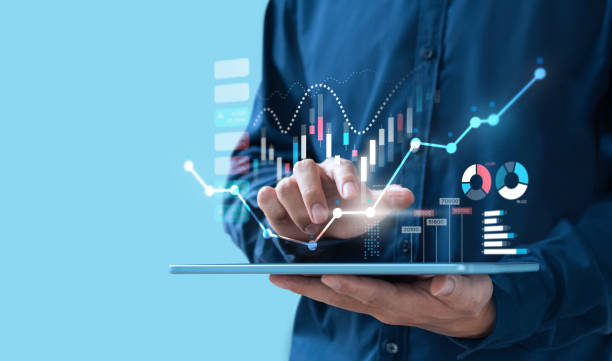It is not so far off that 2035 will arrive. One decade can remake the world beyond our own imagination – just as the last decade gave us artificial intelligence, quantum computing breakthroughs, and digital universes that were before only in science fiction.
As we look out to 2035, it’s not necessarily about gadgets or automation; This is transformation – renewal of innovation. The next advance in progress will not merely add to human existence; This will change the manner in which we live, work, and even think.
1. How will Artificial Intelligence redefine human capacity?
Artificial intelligence (AI) is no longer science fiction; It is a silent engine powering the world now. From personalized therapy to forecasted logistics, AI has impacted every major industry. But by 203,5 its influence will be much deeper and personal.
Over the coming decade, Ais is expected to have an infection in the function of assisting an associate partner. Consider digital assistants that understand reference, emotion, and morality. Imagine Intelligent Systems co-authored research reports, administering urban systems in real time, or predicting international economic swings.
The development of AI will also revolutionize creativity. Authors, artists, and designers will use cognitive systems as co-creators, blending machine precision with human imagination. Consequence? Renaissance of hybrid creativity – Algorithmic insight complemented human feeling.
But there is also deep moral responsibility with great power. How do we ensure that AI works for humans without changing its essence? The answer lies in designing systems connected with human values - open, comprehensible, and human. As the AI is becoming increasingly independent, the next decade will not only test its brains but also test our collective brains in directing it.
2. What will daily life be like in a hyper-connected world?
This will be the characteristic of 2035. With the emergence of 6G networks, satellite internet constellations, and edge computing, digital communications will be instant, borderless, and pervasive.
The houses will become “living ecosystems.” Smart sensors will predict health needs, adjust the quality of the air, and optimize energy use in real time. The city will be an emotional environment – a smart network of sensors, came, and autonomous systems that control everything from traffic to crime prevention.
Transportation would be beyond recognition from today. Self-driving cars will dominate city roads, drones will deliver with zero emissions, and air taxis could make neighborhood travel a sky-high norm. Offices will shift completely into virtual realms – where workers collaborate in 3D virtual spaces anywhere on the planet.
It will render the line between the physical and the virtual world obsolete. Privacy will be the new currency, and cybersecurity a necessity like oxygen. In 2035, data will rule the world – and the manner in which it is responsibly put to use will determine the path between innovation and invasion.
3. How will emerging technologies change health, lifespan, and the human body?
Medicine is reaching the golden age of accuracy, as treatment stops being reactive and turns predictive. Technology in 2035 will enable humans to live long, healthy, and more personalized lives.
The genome sequencing, which was once a billion-dollar project, is today accessible to millions of people. This will pave the way for completely personalized therapy – where treatment is tailored to match a person’s genetic profile. Symptoms of diseases like Alzheimer’s and Cancer can be detected years ahead of time before they occur, and nanotechnology will allow miniature robots to repair cells from within the body.
Neural interfaces—hardware which communicates between the brain and the computer—will enhance cognition, restore amputees’ mobility, and even enable direct thought communication. Enhancements will become a reality through prosthetics, erasing the line between natural and developed intelligence.
All these breakthroughs, however, will give rise to philosophical and ethical debate. If the human capacity can be augmented endlessly, what does human existence define? Will the enhanced classes get the benefits of widening disparity?
4. What will the roles of sustainability and green innovation be by 2035?
By 2035, renewable energy won’t be an option anymore – it will be in the spotlight. Solar and wind energy will replace fossil fuels with the help of next-generation battery technologies and AI-un-failure networks. The smart materials will turn the buildings into self-adjusting temperature and carbon-sourcing-from-the-air devices.
Farmers will receive autonomous and data-driven farm data. The urban vertical farms will produce food at a local level with zero wastage, and the lab-grown meat will become a standard. Drone will monitor soil health and forecast AI crop yield to ensure global food security.
This technology revolution will make sustainability lucrative. Circular economies, where waste is used as raw material for fresh production, will define industrial design. All products will have a digital “eco-ID”, which will track their environmental impact from production to end-of-life.
Amidst these changes is the question central to human adaptation: how will governments, economies, and individuals respond to the pace of change? This question lays the foundation for the future of technology in 10 years from now, where ethics and innovation must co-evolve.
When done right, technology will not just save the world – it will make it thrive, making sustainability an issue and yet the crowning glory of civilization.
5. New frontiers, space technology, and quantum computing: How will progress be redefined?
Behind the overt revolution of AI and automation, another revolution is quietly unfolding in the hidden realm of computation and discovery. Quantum computing, formerly an experiment in the lab, is poised to transform every data-based, security-based, or simulation-based industry.
By 2035, quantum systems will be capable of solving problems that would take classical computers thousands of years to solve. This has led to breakthroughs in drug discovery, optimization of logistics, cryptography, and materials science – all at speeds hitherto unimaginable.
Even more revolutionary will be the emergence of synthetic biology – engineering life at the molecular scale. People will create organisms that will clean the oceans, generate energy, and produce materials.
This convergence of calculation, discovery, and biology will be the real birth of creativity. Human beings will move from being the masters of nature to being co-creators of the universe. Creativity tools will no longer be constrained by imagination – they will be brought to life through code, information, and molecular synthesis.
6. Last Thoughts: The Human Dimension of the 2035 Revolution
As we move into 2035, the story of technology isn’t so much a story of progress – it’s one of intent. Machines can learn faster, process faster, and adapt eternally, but will they ever understand why?
Technology development needs to be driven by human consciousness development. Innovation without sympathy is a future effective but a threat to generate sollass. The greatest invention in the next decade will not be a device, but an attitude – one that unites intelligence and ethics, automation and speed, and awareness and persistence.
Education systems will have to adapt to equip people who are not yet ready for employment in careers that do not yet exist, but for information that technology cannot yet deliver. Emotional intelligence, moral reasoning, and critical thinking will be the real currencies of progress.
The 2035 vision is not a prediction – it is a preparation. The tools that build our tomorrow are being built today. How we use them will decide whether they create a better or worse tomorrow.
Lastly, the innovation renaissance has nothing to do with machines that can replace humans – it’s about human beings to dream themselves again. The future of technology in 10 years is not to fear some external authority or worship it; This is a native growth that is waiting to hug.
By 2035, humanity won’t just be living in a smart world – it will be smarter, more interconnected, and more aware. And that wake-up call is the real promise of the coming decade: progress powered by intelligence that values intelligence and imagination.


